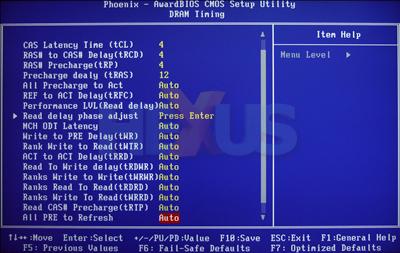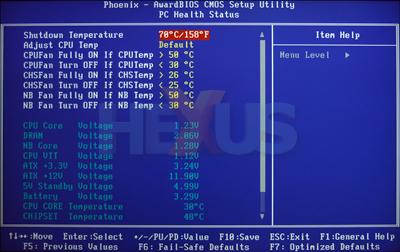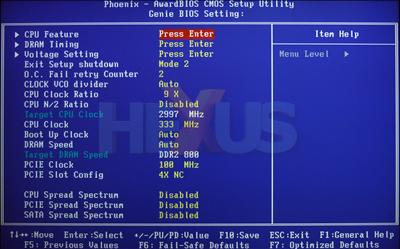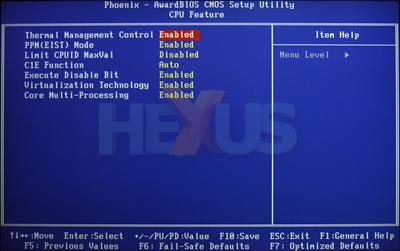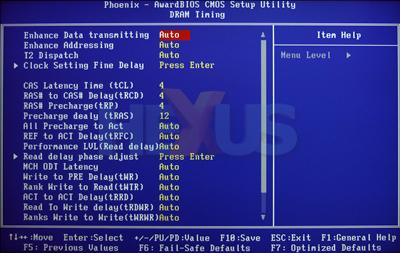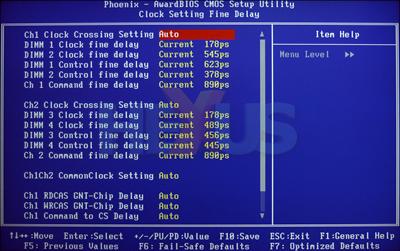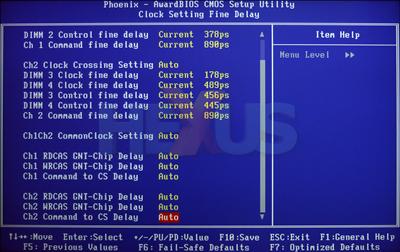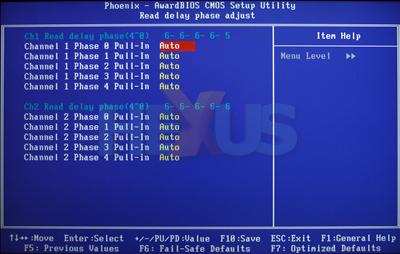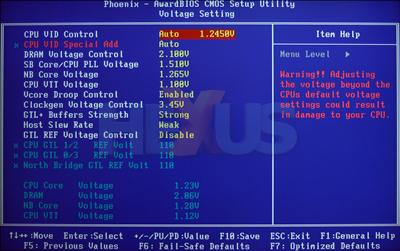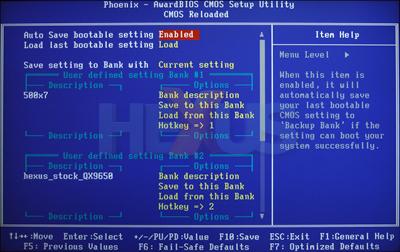DFI LANPARTY LT X48-TR2 BIOS options
| |
|
|---|---|
| Item | Specifications |
| CPU FSB | 200MHz-700MHz (1MHz increments) (400MHz–2800MHz QDR Format) |
| CPU multiplier | CPU Min. (6x) – 50x (1x increments) |
| PCI-E clock | 100-250MHz (1MHz increments) |
| Memory Ratios | 200MHz FSB / (667 or 800) 266MHz FSB / (667, 800 or 1066) 333MHz FSB / (667, 800 or 1066) 400MHz FSB / (800 or 1066) 400MHz FSB |
| CPU voltage | 0.9V-1.6000V (0.00625V increments) |
| CPU voltage reference (Avaliable from 1.45625V and above) |
0 to 130% (0.24% increments) |
| Memory VDIMM | 1.710V-3.040V (0.02V increments) |
| Northbridge voltage | 1.265V-2.040V (0.013V increments) |
| Southbridge voltage | 1.510V- 2.380V (in ~ 0.130V increments) |
| FSB termination voltage | 1.10V-1.603V (0.005V increments) |
Discussion
DFI offers more options than most, allowing you to tweak settings to your heart's content. Voltage and clock adjustments are very generous, offering options beyond you would require or, indeed, are achievable.Gallery
Accessing the Genie BIOS section reveals most of the performance-related options.
